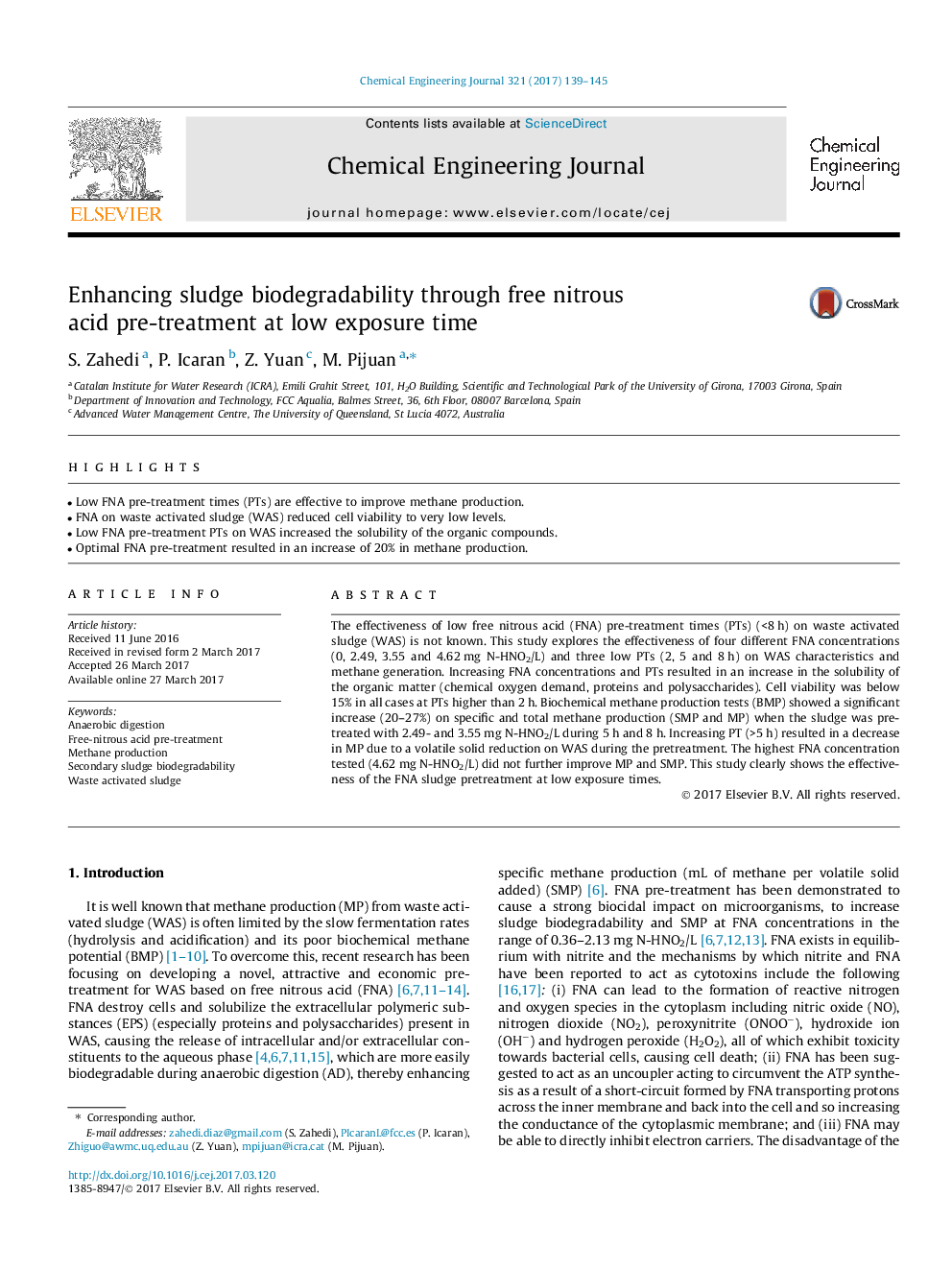| Article ID | Journal | Published Year | Pages | File Type |
|---|---|---|---|---|
| 6465789 | Chemical Engineering Journal | 2017 | 7 Pages |
â¢Low FNA pre-treatment times (PTs) are effective to improve methane production.â¢FNA on waste activated sludge (WAS) reduced cell viability to very low levels.â¢Low FNA pre-treatment PTs on WAS increased the solubility of the organic compounds.â¢Optimal FNA pre-treatment resulted in an increase of 20% in methane production.
The effectiveness of low free nitrous acid (FNA) pre-treatment times (PTs) (<8Â h) on waste activated sludge (WAS) is not known. This study explores the effectiveness of four different FNA concentrations (0, 2.49, 3.55 and 4.62Â mg N-HNO2/L) and three low PTs (2, 5 and 8Â h) on WAS characteristics and methane generation. Increasing FNA concentrations and PTs resulted in an increase in the solubility of the organic matter (chemical oxygen demand, proteins and polysaccharides). Cell viability was below 15% in all cases at PTs higher than 2Â h. Biochemical methane production tests (BMP) showed a significant increase (20-27%) on specific and total methane production (SMP and MP) when the sludge was pretreated with 2.49- and 3.55Â mg N-HNO2/L during 5Â h and 8Â h. Increasing PT (>5Â h) resulted in a decrease in MP due to a volatile solid reduction on WAS during the pretreatment. The highest FNA concentration tested (4.62Â mg N-HNO2/L) did not further improve MP and SMP. This study clearly shows the effectiveness of the FNA sludge pretreatment at low exposure times.
